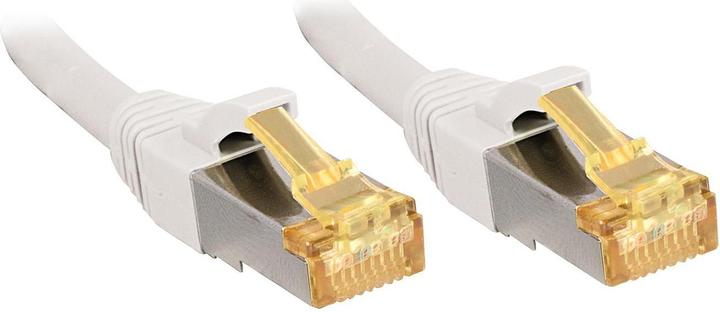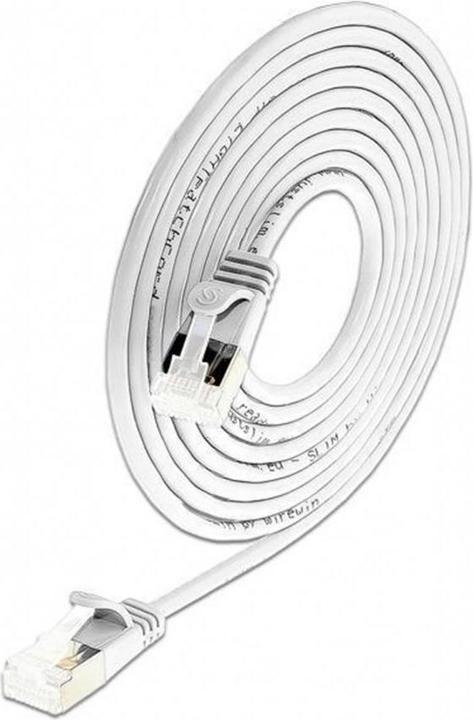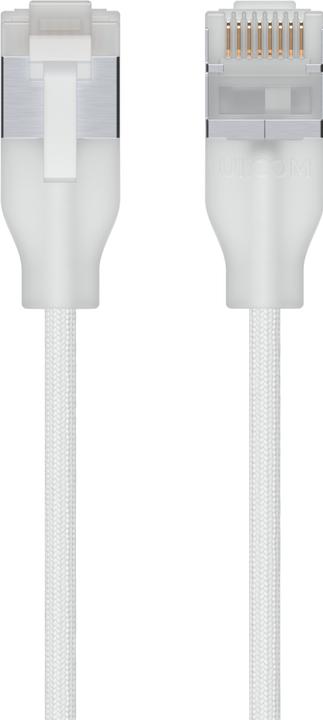
Too Many Network Cables? Here's How to Choose the Right One
Discover the key factors to consider when selecting the perfect network cable for your needs.
Last updated 22 hours ago. Automatically generated content.


Select options and limit the number of products
Patch cable type determines the medium through which data is transmitted in a network, directly impacting speed and distance capabilities. Selecting the right cable type is crucial for ensuring efficient data transmission and compatibility with existing network infrastructure.
Popular options (you can select more than one)
Copper cable
Typical price
9.– to 27.–Made from twisted pairs of copper wires, often shielded for better performance.
Suitable for short to medium distances, offering a cost-effective solution for most home and office networks.
Bestseller
Fibre optic cable
Typical price
17.– to 68.–Composed of thin strands of glass or plastic that transmit data as light pulses.
Ideal for long-distance and high-speed data transmission, making it perfect for large networks and environments requiring high bandwidth.
Bestseller

InLine Network cable
10 m
The cable category determines the speed and frequency at which data can be transmitted over the network cable, impacting overall network performance. Choosing the right category is essential for ensuring compatibility with network equipment and achieving the desired data transfer rates.
Popular options (you can select more than one)
CAT6
Typical price
9.– to 25.–Supports speeds up to 1 Gbps and frequencies up to 250 MHz.
Suitable for home networks and small offices, providing reliable performance for everyday use.
Bestseller
CAT6a
Typical price
10.– to 27.–Supports speeds up to 10 Gbps and frequencies up to 500 MHz.
Ideal for larger businesses and network setups requiring higher data transfer rates and reduced crosstalk.
Bestseller
CAT7
Typical price
12.– to 43.–Supports speeds up to 10 Gbps and frequencies up to 600 MHz.
Offers enhanced shielding, making it suitable for environments with high interference.
Bestseller

Lindy Network cable
S/FTP, CAT7, 3 m
CAT8.1
Typical price
12.– to 31.–Supports speeds up to 25 Gbps and frequencies up to 2000 MHz.
Perfect for data centers and high-performance applications needing ultra-fast connections.
Bestseller
CAT8.2
Typical price
20.– to 72.–Supports speeds up to 40 Gbps and frequencies up to 2000 MHz.
Best for future-proofing network infrastructure, especially in professional environments requiring top-tier performance.
Bestseller
The length of a network cable determines how far it can extend from the connection point to your device. It is crucial for ensuring connectivity without compromising on signal quality or experiencing clutter from excess cable.
Popular options
Up to 2 m
Typical price
9.– to 22.–Best suited for close-range connections such as connecting desktops to nearby routers.
Minimizes cable clutter and is easy to manage in tight spaces or small offices.
Bestseller
3 - 7 m
Typical price
11.– to 29.–Offers flexibility for mid-range setups like connecting devices across a room.
Ideal for home offices or small business environments where moderate distance coverage is needed.
Bestseller
10 - 30 m
Typical price
20.– to 54.–Suitable for long-distance connections, such as linking equipment across different rooms or floors.
Perfect for large office spaces or homes where devices are spread out, ensuring strong connectivity over extended areas.
Bestseller
The shield type in network cables refers to the method used to protect the cable from electromagnetic interference (EMI) and crosstalk. Choosing the right shield is essential for ensuring reliable data transmission, especially in environments with high EMI.
Popular options (you can select more than one)
S/FTP
Typical price
10.– to 29.–Each pair is individually shielded with foil, and the entire cable is wrapped in braided shielding.
Ideal for environments with heavy EMI, offering superior protection and ensuring consistent performance.
Bestseller
U/FTP
Typical price
9.– to 31.–Each twisted pair is shielded with foil, but the cable itself lacks an overall shield.
Provides good protection against crosstalk, making it suitable for office environments with moderate EMI.
Bestseller
F/UTP
Typical price
9.– to 22.–The entire cable is wrapped in foil shielding, while individual pairs remain unshielded.
Offers a balance of protection and flexibility, suitable for less EMI-prone areas.
Bestseller
S/UTP
Typical price
15.– to 57.–The cable features an overall braided shield, with unshielded twisted pairs inside.
Effective in reducing EMI, suitable for industrial settings with considerable interference.
Bestseller

Ubiquiti Cable UACC-Cable-Patch-EL-C6A-0.3M-W
S/UTP, CAT6a, 0.30 m
Contact assignment refers to the configuration of wires within a network cable, determining how devices are connected. Choosing the correct contact assignment is vital for ensuring network functionality and compatibility between devices.
Popular options (you can select more than one)
straight
Connects each wire to the corresponding wire on the other end, typically used for connecting different devices like computers to routers.
Recommended for standard network setups, providing reliable and straightforward connections between devices.
Bestseller
crossover
Switches the transmission and receiving wires to connect similar devices directly, such as computer-to-computer connections.
Ideal for direct device communication without a hub or switch, making it suitable for specialized network configurations.
Bestseller




